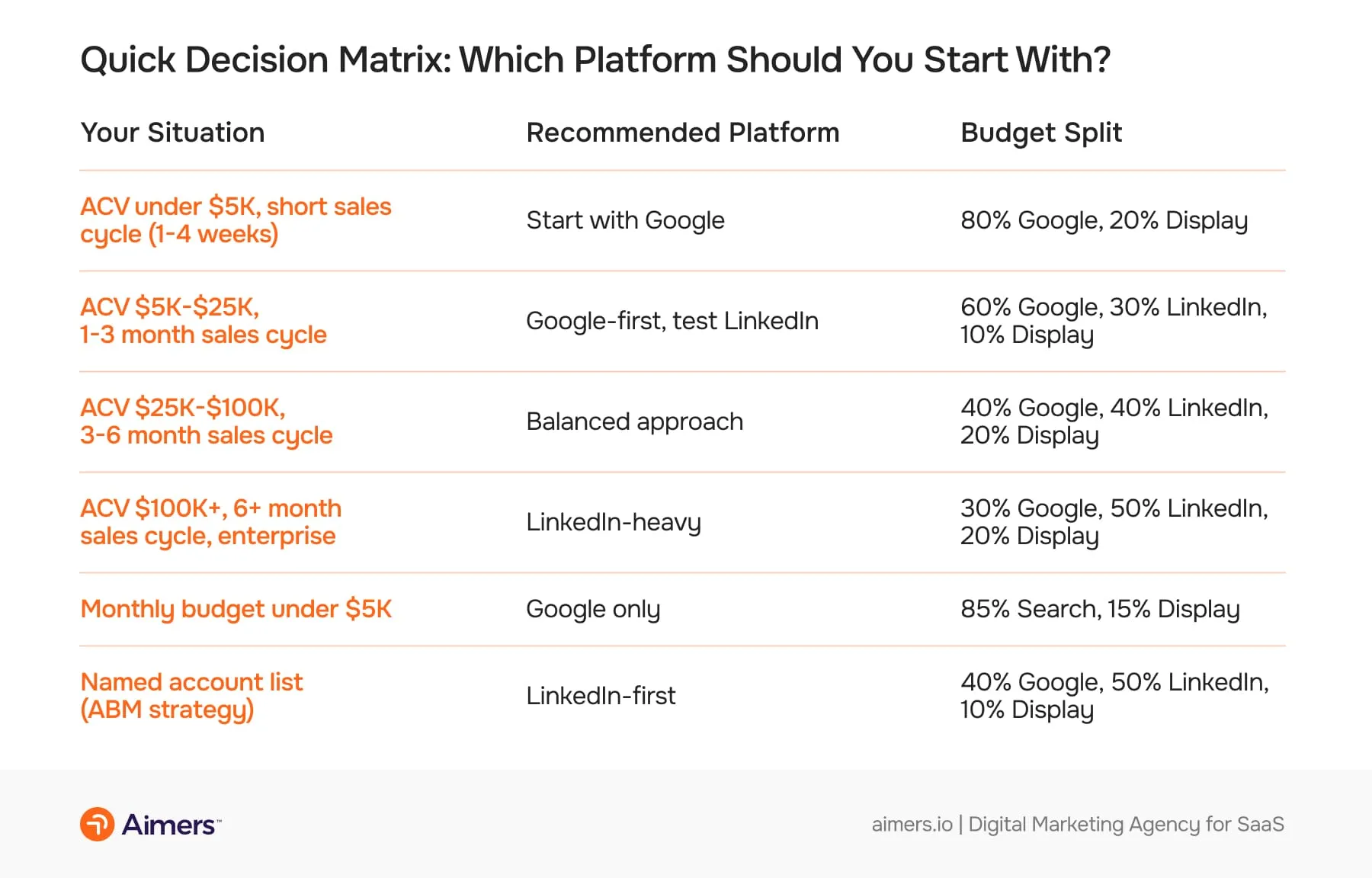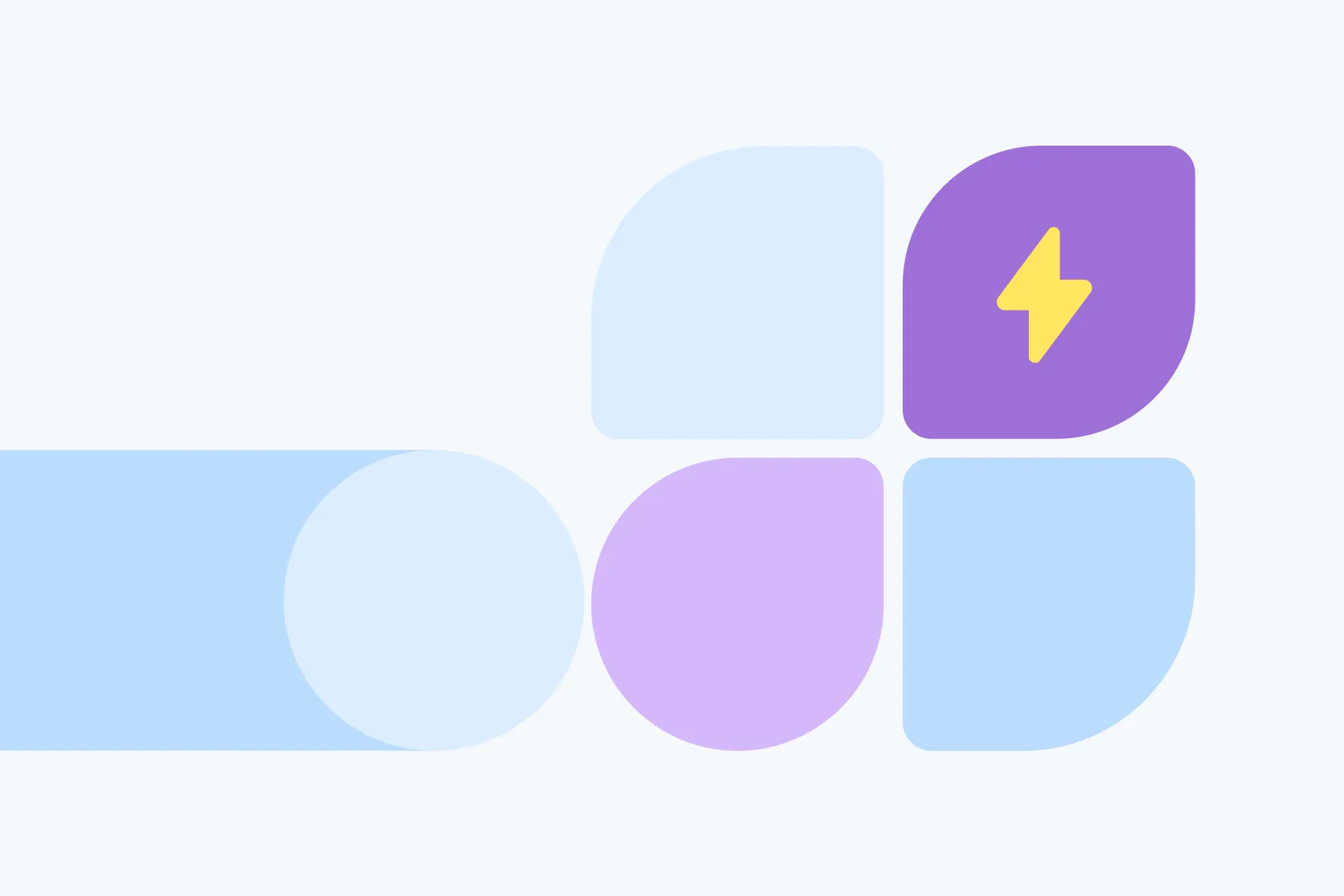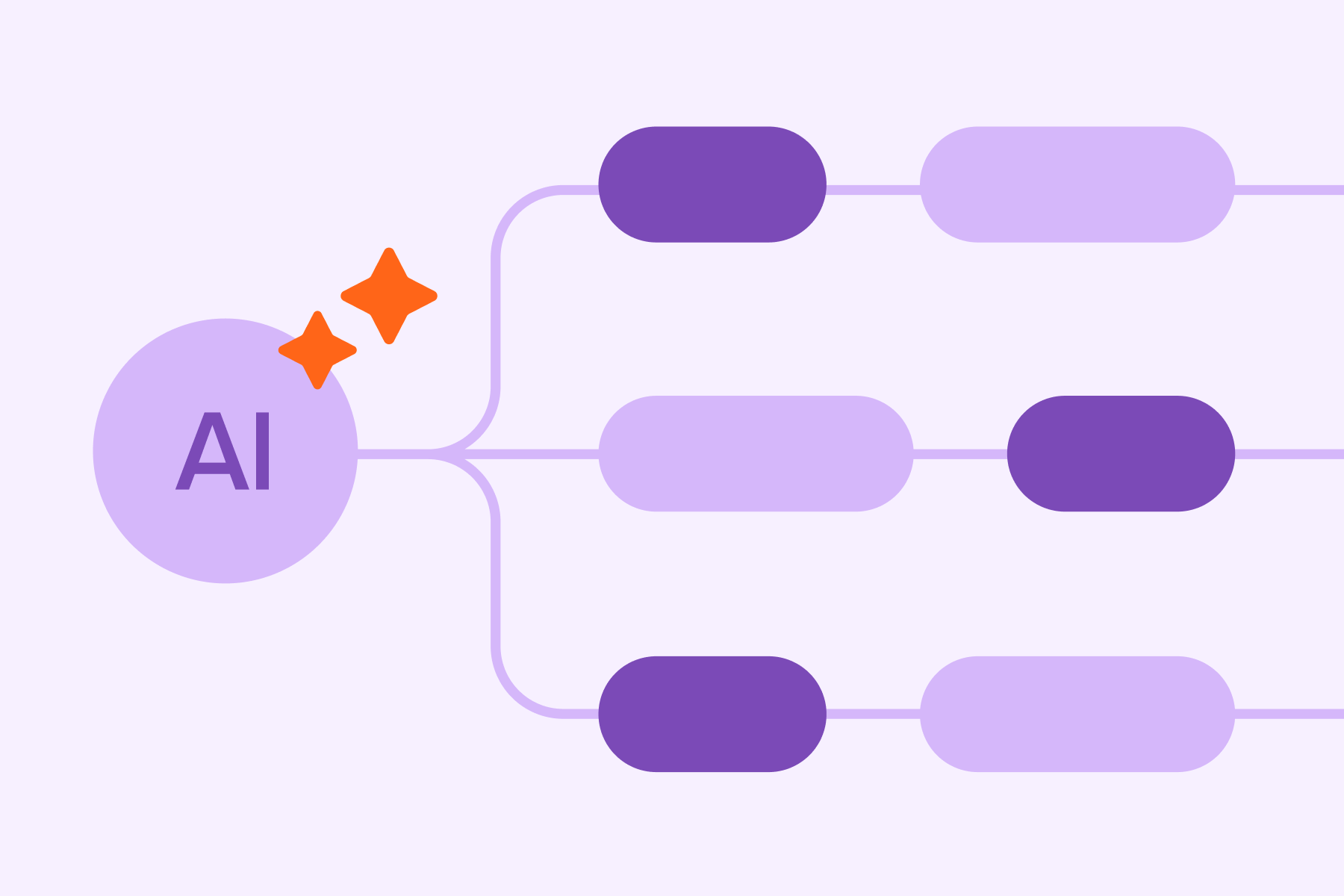Google Ads vs. LinkedIn Ads for SaaS Companies
Anastasiya Khvin
November 13, 2025

Honestly, this question comes up in nearly every strategy call I have. It's always the same: "Should we focus on Google or LinkedIn?" The truth is, there isn't a one-size-fits-all answer. Anyone who claims otherwise might just be trying to sell you something.
Let me break this down for you the way I do with my clients. No fluff, just practical insights based on real experiences.
Why Your Platform Choice Actually Matters for B2B SaaS Growth
I've seen companies burn through over $50K on the wrong platform before they realized they were casting their nets in the wrong waters. The platform you choose really changes the game. It affects who sees your ads, when they see them, and what mindset they’re in at that moment. Google captures people right when they're searching. Meanwhile, LinkedIn targets decision-makers who are scrolling through their feeds at work, even when they aren’t specifically looking for your product. We've witnessed companies double their lead volume simply by reallocating their budget to the right platform.
One of my team members puts it best: "Marketing rarely fails because of low traffic. The real leak is usually deeper in the funnel." That's why we always start by understanding the full customer journey before recommending where to spend.
If you're not sure where your funnel's breaking, you're probably optimizing the wrong thing - it matters, it really does.
Understanding Google Ads for B2B Lead Generation
Google Ads is where intent lives.
When someone types "project management software for remote teams" at 2 PM on a Tuesday, they've got a problem that needs solving right now. Maybe their tool just crashed during a client demo. Maybe their boss wants a solution by end of week. You know how it goes.
How Google Search Ads Capture Intent-Driven SaaS Buyers
Search ads catch people mid-journey. They know they have a problem, they're comparing options, they're ready to move.
We run search campaigns for tons of SaaS clients through our Google Ads service and the pattern never changes. Search ads generate leads faster with clearer intent than anything else. The person clicking your ad for "enterprise video hosting platform" probably already has budget approved and a shortlist of three vendors.
Your job? Get on that list.
The search network lets you bid on competitors' names, target by location, adjust bids by device or time. When someone searches "[your competitor] alternative" you better be showing up. We've had single competitor campaigns pull in 30%+ of total leads.
Competitor campaigns convert like crazy because people are already deep in the buying process. According to WordStream's research on competitor keywords these campaigns often deliver some of the highest conversion rates in B2B.
If you're not bidding on competitor terms you're leaving money on the table.
Google Display Network and Remarketing for SaaS
Display ads get trashed in B2B circles and I get it - random banner ads on cooking blogs aren't closing six-figure deals.
But display works for remarketing. Someone hits your pricing page, gets pulled into a meeting, vanishes. Display ads follow them around for 30 days quietly reminding them you exist.
We use display for remarketing site visitors, hitting in-market audiences, catching people who watched your YouTube content. The ROI isn't as clean as search but it keeps you visible. In B2B SaaS where sales cycles stretch for months, staying visible matters.
Google's own data on remarketing shows these campaigns usually see better conversion rates than cold traffic.
Think of display as the backup singer - makes everything else sound better.
LinkedIn Ads for SaaS and the Account-Based Marketing Advantage
If Google is where intent lives, LinkedIn is where your ideal customers hang out between meetings.
Why LinkedIn Advertising Works for High-Value B2B Deals
LinkedIn lets you target the VP of Marketing at companies with 500-1000 employees in healthcare who have "budget authority" in their profile. Try pulling that off on Google.
This precision is why LinkedIn owns the ABM space. When your average deal is $50K+ and you're selling to 500 specific target accounts, you need accuracy. One client literally said "I want to reach these 200 companies and nobody else." LinkedIn made it happen.
We've run campaigns through our LinkedIn Ads service where we uploaded target company lists and only showed ads to decision-makers at those businesses. CPL was higher but the lead quality was insane. We're talking C-suite executives who can sign contracts, not junior managers who need to "sync with the team."
For B2B sales with multiple buying committee members LinkedIn's targeting can't be beat. HubSpot's research on B2B marketing channels consistently shows LinkedIn crushing other social platforms for lead quality in enterprise.
When you're hunting elephants you need a rifle not a shotgun - that's LinkedIn.
LinkedIn Ad Formats That Drive B2B Leads
Sponsored Content performs well for thought leadership. We use these for case studies and industry reports - the kind of content a VP saves to read later or forwards to their team.
Message Ads land directly in LinkedIn inboxes. They're either genius or annoying, there's no in-between. When we send personalized messages about webinars that match someone's role, open rates hit 50%+.
We learned this the hard way with a fintech client. Sent 5,000 generic messages, got 2% open rate. The marketing director's Slack ping came in at 6 AM: "what happened." That Monday morning coffee went cold fast. We rebuilt around actual pain points instead of product features, open rates jumped to 43%. That one hurt before it helped.
Lead Gen Forms are LinkedIn's secret weapon. Pre-filled with user data, someone can submit in two clicks. No landing page, no typing their email again. We've seen conversion rates 2-3x higher than regular forms.
One client watched their conversion rate jump from 4% to 11% just by switching to Lead Gen Forms - same ad, same audience, less friction. Remove the obstacles between interest and action, watch what happens.
The Real Differences Between Google Ads and LinkedIn Ads
Google targets what people do. LinkedIn targets who people are.
One says "this person is searching for X." The other says "this person IS X."
User mindset differs too. On Google people are in fix-my-problem mode. On LinkedIn they're in learning or networking mode. We've seen the same offer flop on LinkedIn and crush on Google because the framing was wrong.
Biggest difference? Cost. LinkedIn is expensive - the kind that makes your CFO ask questions during budget reviews.

When Google Ads Works Better for SaaS Companies
Search Intent vs. Professional Targeting
If people are actively Googling for your solution you want to be on Google. Period.
This is especially true for products solving urgent problems, categories with heavy comparison shopping, products with clear search volume around pain points.
We had a form-builder client where search volume was massive. People Googling "best form builder" and "typeform alternative" thousands of times monthly. Google was the obvious play. We drove their CPL down while scaling volume by 60%. Their marketing director sent us a Slack message at 8 AM: "holy shit look at the dashboard."
Those are the moments you live for. Three months later they hired two more sales reps just to handle volume.
The search intent signal is powerful. When someone types "how to reduce customer churn" they're telling you their exact problem. Search Engine Journal's guide to search intent breaks down why this matters for conversion rates.
If people are searching for it, be there - it's the closest thing to guaranteed demand.
Cost Per Lead and Where Google Ads Delivers ROI
Google usually delivers lower cost per lead - $50-150 CPL on Google versus $100-300+ on LinkedIn.
But here's the thing - CPL isn't what matters. Cost per customer matters. If Google gives you 100 leads at $80 each but only 2 convert, and LinkedIn gives you 20 leads at $250 each but 5 convert, LinkedIn wins on CAC.
We had one client celebrating their $65 CPL from Google until we showed them their actual CAC was $3,200 because conversion rates were terrible. That Monday call stung. We rebuilt their landing pages and tightened targeting, got CAC down to $1,400. The lesson stuck - they never looked at CPL the same way.
When we work with clients on paid search strategy we map out the entire conversion funnel before making budget calls.
Track what matters not what's easy to measure.
Choosing Between LinkedIn Ads and Google Ads Based on Your Sales Cycle
Your sales cycle length is massive here, most people miss this entirely.
Short Sales Cycles and Google Ads
If you’re closing deals in a span of just 1 to 4 weeks - think lower-priced SaaS, self-serve products, and tools for small and medium-sized businesses - Google really shines with its speed advantage.
Google is a powerhouse when your growth strategy revolves around the product itself, especially with free trials and an annual contract value under $10K. When you're targeting small businesses and decision-making rests in the hands of just one person, the impact is even greater. The pace at which Google generates leads is simply unparalleled. If your sales cycles are short.
Complex B2B Sales and the Case for LinkedIn
If your sales cycle stretches from three to six months—or even longer—and you're dealing with a buying committee, especially for deals over $25,000, LinkedIn is the way to go. LinkedIn offers a professional setting that suits this approach perfectly. People come to this platform not just to make purchases, but to educate themselves.
We've watched this with enterprise clients. LinkedIn leads take forever to close but close bigger. The CMO who downloads your whitepaper in Q1 might demo in Q2 and sign in Q3. Gartner's research on B2B buying shows the average enterprise deal involves 6-10 decision-makers - exactly where LinkedIn's targeting shines.
Long sales cycles need long-game platforms.
LinkedIn Ads Cost vs. Google Ads and the ROI Reality
CPCs on LinkedIn often hit $8-15 for B2B SaaS. On Google search maybe $3-8. That's 2-3x difference, sometimes more.
But you're not paying for clicks - you're paying for access to specific people. When you can target "Director of Sales Operations at 200-500 employee companies using Salesforce" that precision costs money for a reason.
LinkedIn has higher cost per lead but typically better lead-to-customer conversion. Google has cheaper leads but they're often earlier in the funnel.
We've run campaigns where LinkedIn CPL hit $300+ but sales closed 20% of them. Google CPL sat at $75 but conversion was 3%. LinkedIn delivered way better CAC. Your sales team was happier too - no wasted hours on garbage leads.
The sales director stopped complaining in our weekly calls which honestly was a first. When the person who usually spends half the call explaining why marketing leads suck suddenly has nothing to complain about, you've found product-market fit for your ads.
Focus on metrics that matter for your business not the cheapest CPL. If you're not sure where budget's leaking start with an audit of your current campaigns.
Cheap leads that don't convert are just expensive disappointments.
Effective Ad Strategies for B2B Marketing on Each Platform
Using Google Ads to Capture Bottom-Funnel Demand

We see best ROI on problem/solution and competitor campaigns. Brand campaigns are defense not offense. Grab our Google Ads optimization checklist if you need help building these out.
Start with these four campaign types you'll cover most of what matters.
Using LinkedIn Ads for Top-of-Funnel Awareness
Thought leadership campaigns push your best research reports and frameworks. Goal is proving expertise and building your retargeting pool.
Case study campaigns target specific industries with relevant customer stories. These bridge awareness and consideration. We've seen case study campaigns outperform generic "product benefits" ads by 3x.
Demo/trial campaigns only target warm audiences - people who've visited your site, engaged with content, or are on your email list. Don't blow demo budget on cold prospects. We tried it once with a client who insisted, their head of sales called at 4 PM asking why 80% of demos were no-shows. Now we only run demo campaigns to people who've engaged at least twice, no-show rate dropped to 15%.
Our LinkedIn ads optimization checklist goes deeper. LinkedIn's marketing blog regularly drops data on what works.
Warm audiences convert 3-5x better than cold on LinkedIn.
How to Use Both Platforms in Your B2B Marketing Campaign
Use both platforms but for different jobs. They're teammates not rivals.
Google captures active demand, bottom-funnel conversions, competitor conquesting, high-volume lead gen. LinkedIn builds awareness with target accounts, reaches decision-makers, runs ABM campaigns, establishes thought leadership.
The magic happens when they work together. Someone sees your LinkedIn content about trends, three weeks later they're searching on Google, they click your ad, they convert. Both touchpoints mattered even if you can't track it perfectly.
We also use Google remarketing to chase people who engaged with LinkedIn ads but didn't convert. Cross-platform remarketing is underused but powerful. Neil Patel's guide digs deeper.
Stop thinking channels, start thinking journeys.
Compare LinkedIn Ads vs. Google Ads Through a Real SaaS Case Study
We worked with a B2B analytics platform burning budget on Google with mediocre results. Average deal was $45K, targeting mid-market, sales kept complaining about lead quality, their CMO was getting frustrated.
Before we got involved: CPL was $95, 180 leads monthly, 2.1% lead-to-customer conversion, CAC around $4,500. Sales was drowning in unqualified demos.
We moved 60% of budget to LinkedIn and rebuilt both platforms around what their sales process actually looked like. We sat in on calls, listened to recordings, analyzed their CRM like we were hunting for gold.
Six months later the CEO sent us whiskey:

Total CAC dropped hard, lead quality skyrocketed. They were closing bigger deals from LinkedIn and faster deals from Google. Sales stopped complaining and started asking for more budget. The CMO smiled in a meeting which her team said never happened.
Wait, let me explain that properly - we were worried about cutting lead volume by more than half. But 55 qualified leads beat 180 garbage leads every time.
Stop staring at CPL, look at full funnel and actual CAC. See more examples in our case studies.
Quality beats quantity when your sales team's time costs more than your ad spend.
Choosing Between LinkedIn Ads and Google Ads with This Decision Framework

When Your B2B SaaS Should Invest in LinkedIn Ads
Invest in LinkedIn when you're engaging in Account-Based Marketing aimed at particular companies. If your target audience consists of senior decision-makers and you need to connect with several stakeholders, it's essential. Moreover, when your product is complex and requires some explanation, or if you're introducing a new market category, LinkedIn can be extremely helpful.
When Google Ads Makes More Sense for Your Platform
If your product is designed for self-service or offers a free trial, and you're aiming for small and medium businesses, then Google’s the way to go. It's particularly effective if your sales cycle is short or if you're looking for quick results. In fact, Google shines when you’re just starting. You can experiment and scale your Google campaigns much faster. The learning curve is more manageable, and the feedback loop is tighter, allowing for quicker adjustments and improvements.
The Hybrid Approach Works Better
Most SaaS companies we work with run both platforms, just with different strategies and budget splits.
For LinkedIn, they typically allocate around 30-40% of their budget. This investment is primarily focused on building brand awareness, showcasing thought leadership, nurturing relationships with decision-makers, and executing account-based marketing campaigns. We track combined metrics: overall CAC, customer LTV, channel-influenced revenue, multi-touch attribution. For deeper strategies check out our 5 B2B SaaS PPC strategies to try in 2025.
Forrester's research shows companies using multiple platforms in coordinated strategies see way better ROI than companies betting on one channel.
Ready to Scale Your SaaS with the Right Paid Strategy?
You don’t have to deal with this challenge by yourself. At Aimers, we specialize in running campaigns on platforms like Google and LinkedIn for SaaS businesses at all stages, whether they’re just starting out or scaling up to Series C.
We've learned what strategies succeed and what approaches waste resources. Our team dives deep into your actual data to comprehend your customers' buying behavior.
We've managed campaigns for Mixpanel, ShipBob, Orion Labs - increasing their sales opportunities 60% to 4X while driving down cost per lead.
If you're wondering where your ad budget is disappearing or which platform deserves more attention let's talk. We'll take a close look at everything you're using and provide you with straightforward advice, even if it means suggesting alternatives to what we provide.
We don't guess, we track everything. Usually with too much coffee and a slightly concerning obsession with spreadsheets. But that's why the numbers work.










